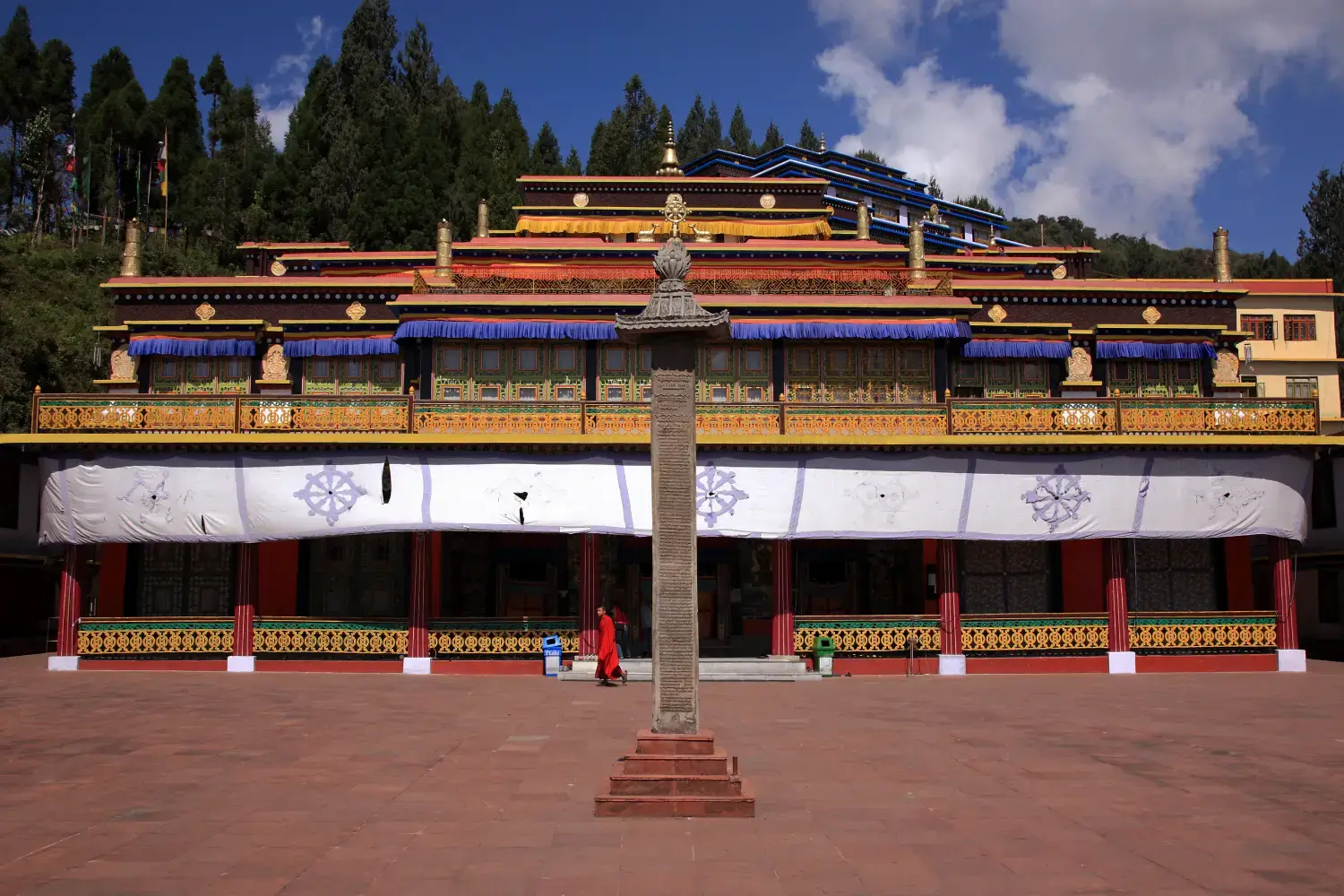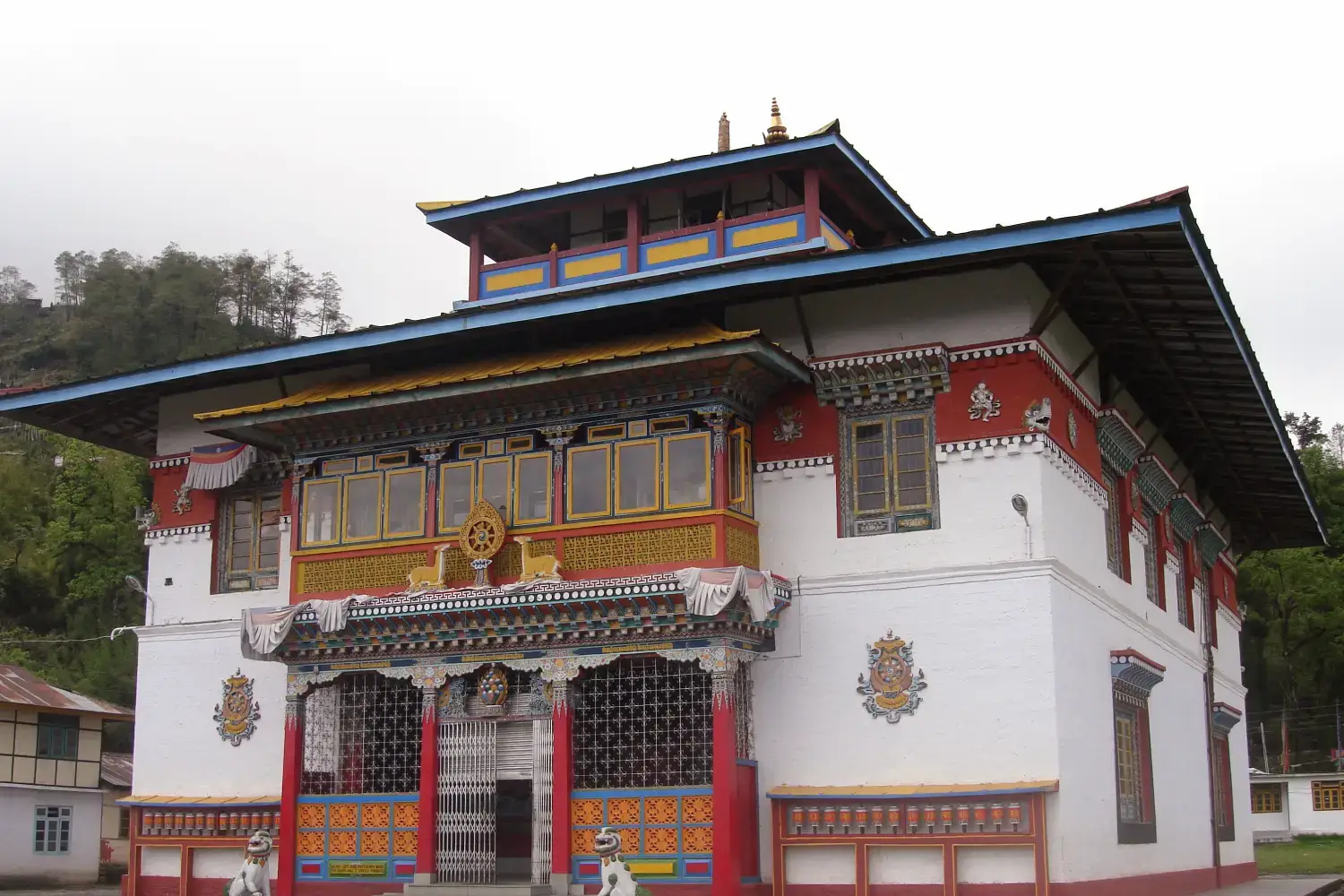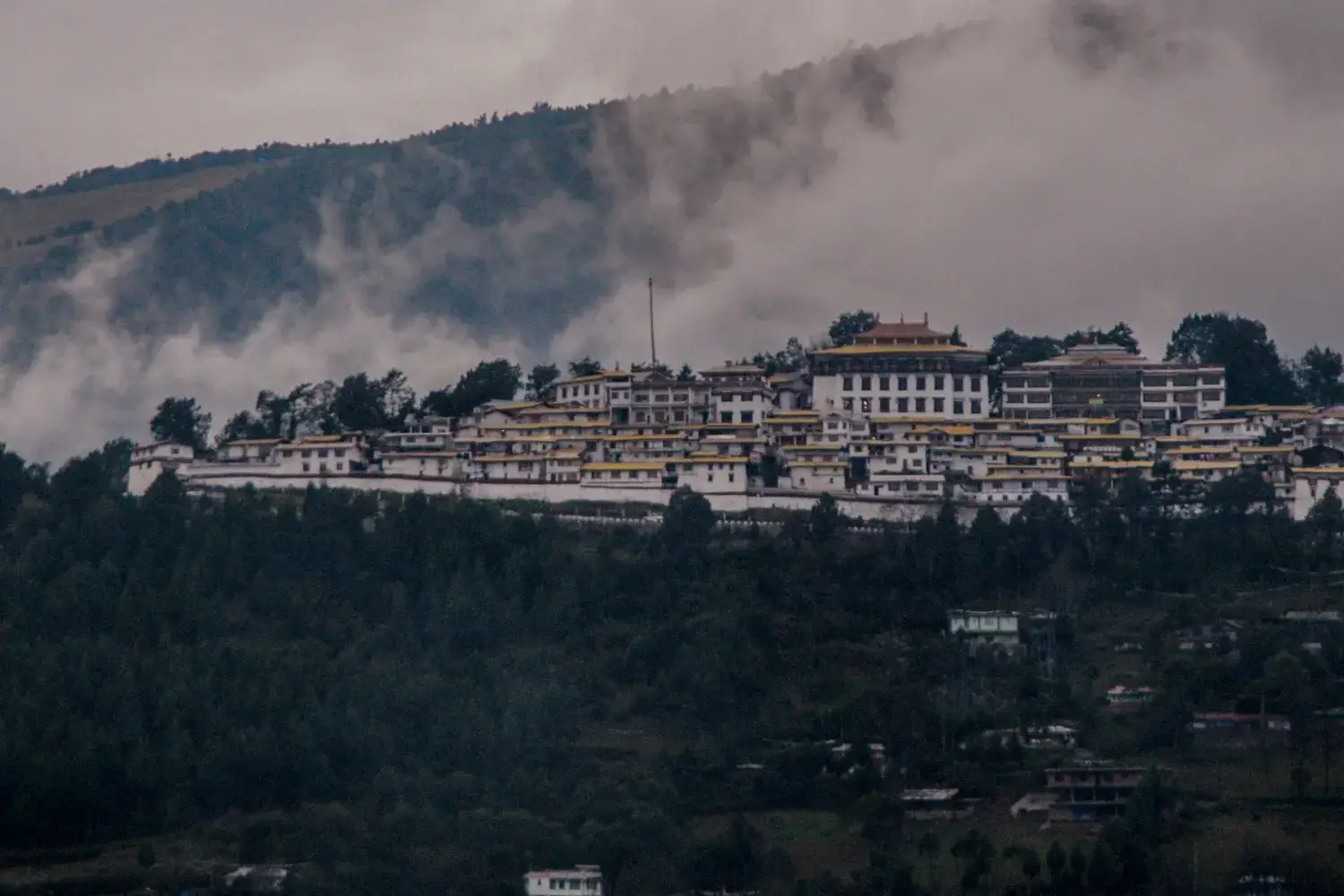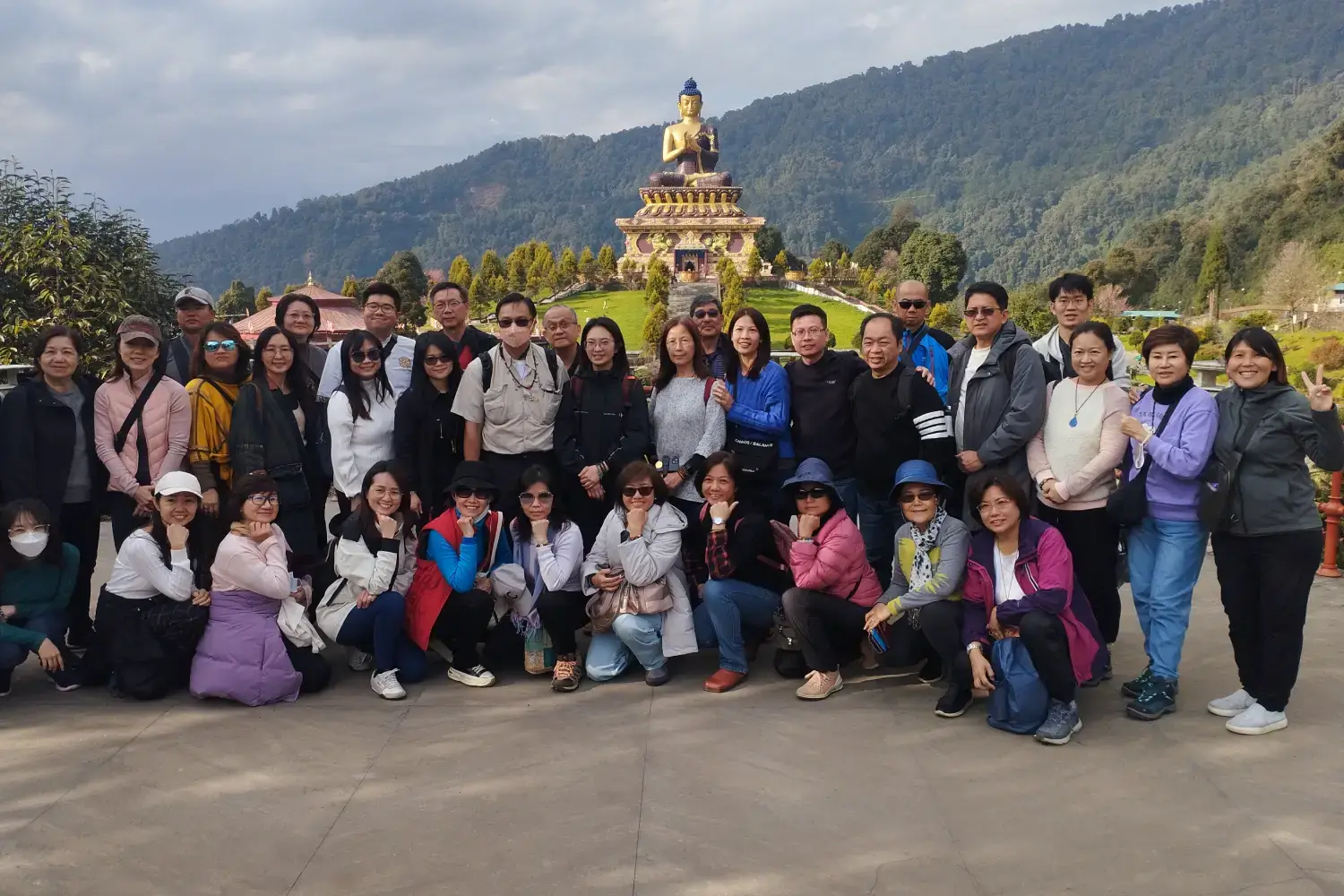5 Best Buddhist Places to Visit in North East India
The land of Northeast India is a place filled with peace and calmness that will let you live in the present to revitalise your spirit by spending time in the spiritual environment. For exploring the footprints of Lord Budhha in Northeast India, the land of seven sisters is a great place to visit to blend with the Buddhist culture and forget about all stress and anxieties. The Buddhist complexes, monasteries, stupas and chanting of mantras create a sense of spirituality and faith in the environment and heal every soul with its magic.
Siddhartha Gautam, king of Sakya who has its roots connected to Nepal came to be known as Gautam Buddha, who founded the notion of enlightenment in India and is believed to be the founder of Buddhism. The religion travelled wide across the nation and as the northeastern part is close to the region of Nepal therefore Buddhism became one of the most practised religions in the area. People who are thinking of a Buddha tour to Northeast India should know about the important and popular Buddhist temples and stupas as the region is said to be the core territory of Buddhism culture.
Throughout the northeastern states of India, you will find numerous Buddhist monasteries where you can encounter purity and divinity to enrich your spiritual sojourn. Without wasting a single minute, let’s witness the world of ethereality and embrace the culture of Buddhism in the North East.
List of 5 best Buddhist places to visit in North East India- Rumtek Monastery, Sikkim
- Phodong Monastery, Sikkim
- Pemayangtse Monastery, Sikkim
- Tawang Monastery, Arunachal Pradesh
- Ghoom Monastery, Darjeeling
Rumtek Monastery, Sikkim

Rumtek Monastery located in the Gangtok city of Sikkim is said to be one of the largest and oldest Buddhist pilgrimage sites in North east India and is also known by the name of Dharmachakra Centre. The monastery dates back to the 9th century and serves as a spiritual education centre for locals. The monastery was established by Rangjung Rigpe Dorje, the 16th Karmapa in 1960. The main highlight of the Rumtek Monastery is its Golden Stupa which houses the 16th Karmapa's remains. The Tibetan style architecture of the structure amuses the visitors because of its ancient artefacts and intricate carvings. The monastery serves as a blueprint for other Indian Viharas of the nation.
The picturesque backdrop, waterfalls, water bodies and stunning mountains provide a peaceful and charming environment for the visitors visiting the monastery. The Rumtek Monastery is the main seat of the Karma Kagyu lineage of Tibetan Buddhism. The monastery complex includes a shrine, a retreat centre, a monastic college, a grand library, stupas, a nun’s hostel and other community administration centres. People visiting the monastery can also enjoy the masked dances during Drupchen, which are especially worth seeing in the months of May and June.
Best Time to Visit: September and October
Timings: 6:00 AM to 6:00 PM
Entry Fee: INR 10 per person
Phodong Monastery, Sikkim

While touring the region of Sikkim, one can find Phodong Monastery located on a hilltop of an altitude of 4500 feet in Phodong town which is home to 260 monks and lamas of Kagyu lineage. The monastery was built in the 18th century by the 9th Karmapa during his visit to Sikkim. The monastery is considered quite serene and attractive among the other Buddhist monasteries in Northeast India because of its architectural designs which include vibrant murals, paintings, designs and frescos adding more to its beauty.
The Tibetan style architecture of the monastery amuses the locals as well as tourists because of its ancient artefacts, Buddhist scriptures and intricate carvings. The major highlight of the Phodong Monastery is its Losang festival which takes place especially in the months of December to January. The monastery is set against a stunning backdrop of lush green hills in the distance and a tranquil valley below. Aside from regular devotees, the location is frequently visited by tourists, nature enthusiasts, and travellers.
Best Time to Visit: March to May and October to December
Timings: 8:00 AM to 5:00 PM
Entry Fee: INR 10 per person
Pemayangtse Monastery, Sikkim

While surrounded by the captivating backdrop of India’s highest mountain peak, Mount Kanchenjunga, the Pemayangtse Monastery is quite the oldest among other monasteries in Sikkim. The monastery is quite ancient as it was built by Lhatsun Chenpo in the 17th century, especially for the Bhutia monks. All the Tibetan Buddhist monasteries of Nyingma follow the orders given by the monks and heads of the Pemayangtse Monastery. It is a perfect soul seeking destination in Pelling, Sikkim because the name of the monastery translates to ‘perfect sublime Lotus’ which represents the purity, calmness and divinity of Lord Buddha.
People come to visit the monastery to cherish its historic paintings, the idol of Lord Padmasambhava, carvings on the walls and ceilings and most importantly the golden roof. The main highlight of the monastery is the Cham Dance Festival celebrated every year on the 28th and 29th of the 12th lunar month according to the Tibetan Calendar and is performed quite elegantly with full enthusiasm and zeal. Buddhist tourism in Northeast India will remain incomplete if one does not visit the Pemayangtse Monastery in the Pelling town of Sikkim because of its blissful culture, history and tradition.
Best Time to Visit: March to June
Timings: 9:00 AM to 6:00 PM
Entry Fee: INR 20 per person
Tawang Monastery, Arunachal Pradesh

Holding the title of India’s largest and the world’s second largest monastery is the Tawang Monastery of Arunachal Pradesh which is quite an important pilgrimage site among Buddhist pilgrims. Located in the Tawang Valley, the monastery is one of the best Buddhist places to visit in Northeast India as the backdrop of the site creates a spectacular and amazing view for the visitors. The religious centre of Mahayana Buddhism was founded by Merak Lama Lodre Gyatso in the 17th century and is currently home to around 450 monks and Lamas. Another name of the monastery is 'Galden Namgyal Lhatse' which translates to 'celestial paradise in a clear night'.
The structure of the monastery is quite heart throbbing as it is a three storey building comprising 65 residential complexes. The monastery complex includes a main assembly hall known as ‘Dukhang’, a library and a courtroom which arranges events and festivities. One of the major highlights of the monastery is the Thangka paintings which were painted by the blood of the fifth Dalai Lama.
The other highlight of the Tawang Monastery of Arunachal Pradesh is the grand Torgya festival celebrated every year in the month of January with great grandeur and zeal. Thousands of Buddhist devotees and tourists come to witness the festival from far off destinations and participate in the event where the monks get dressed in traditional attire and perform the famous Cham Dance.
Best Time to Visit: March to June and September to November
Timings: 5:30 AM to 7:00 PM
Entry Fee: Free
Ghoom Monastery, Darjeeling

Blessing the state of West Bengal, Ghoom Monastery lies in Darjeeling at an elevation of 8000 feet, situated close to the borders of the seven sisters and is among the popular Buddhist monasteries in the northeast region. The monastery is also known by the name of ‘Yiga Choeling Monastery’ which was established in the year 1850 by Lama Sherab Gyatso, a Mongolian astrologer.
The monastery belongs to the Yellow Hat sect or Gelukpa and the site becomes quite lively during the celebration of the Tibetan New Year. The major fascinating element that attracts a huge crowd to the Ghoom Monastery is the 15 feet tall Maitreyi Buddha statue beautifully adorned with gold and precious stones. Two huge oil lamps are kept lit in front of the statue. The walls and ceilings of the ancient monastery are decorated with religious arts, thangkas, drums, bells, rare manuscripts and sacred scrolls that provide a lot of insights into Buddhist culture. The magnificent Kanchenjunga and the Tibetan prayer flags create a surreal view for the visitors visiting the Ghoom Monastery in Darjeeling.
Best Time to Visit: September to June
Timings: 7:00 AM to 6:00 PM.
Entry Fee: Free
You May Also Like to Read
- Best Places to Visit in Buddha Circuit Tour Uttar Pradesh
- Bihar Buddhist Circuit Tour- 5 Best Places to Visit
- Best Buddhist Places to Visit in North East India
- 10 Best Buddhist Temples to Visit in World
- Popular Buddhist Festivals in India
- Top Buddhist Destinations in India
- Popular Monasteries in India
- Top Buddhist Tourism Places to Visit in Madhya Pradesh
- Top Buddhist Tourist Places in Gujarat
- Popular Stupas in India
- Nepal Buddha Tour- Best Places to Visit
- Best Buddhist Places to Visit in Himachal Pradesh
- Odisha Buddhist Circuit Tour Places













